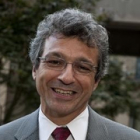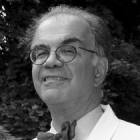You are here
Robotic Arm Rehabilitation in Chronic Stroke Patients With Aphasia May Promote Speech and Language Recovery (but Effect Is Not Enhanced by Supplementary tDCS)
Abstract
Objective:
This study aimed to determine the extent to which robotic arm rehabilitation for chronic stroke may promote recovery of speech and language function in individuals with aphasia.
Methods:
We prospectively enrolled 17 individuals from a hemiparesis rehabilitation study pairing intensive robot assisted therapy with sham or active tDCS and evaluated their speech (N = 17) and language (N = 9) performance before and after a 12-week (36 session) treatment regimen. Performance changes were evaluated with paired t-tests comparing pre- and post-test measures. There was no speech therapy included in the treatment protocol.
Results:
Overall, the individuals significantly improved on measures of motor speech production from pre-test to post-test. Of the subset who performed language testing (N = 9), overall aphasia severity on a standardized aphasia battery improved from pre-test baseline to post-test. Active tDCS was not associated with greater gains than sham tDCS.
Conclusions:
This work indicates the importance of considering approaches to stroke rehabilitation across different domains of impairment, and warrants additional exploration of the possibility that robotic arm motor treatment may enhance rehabilitation for speech and language outcomes. Further investigation into the role of tDCS in the relationship of limb and speech/language rehabilitation is required, as active tDCS did not increase improvements over sham tDCS.







